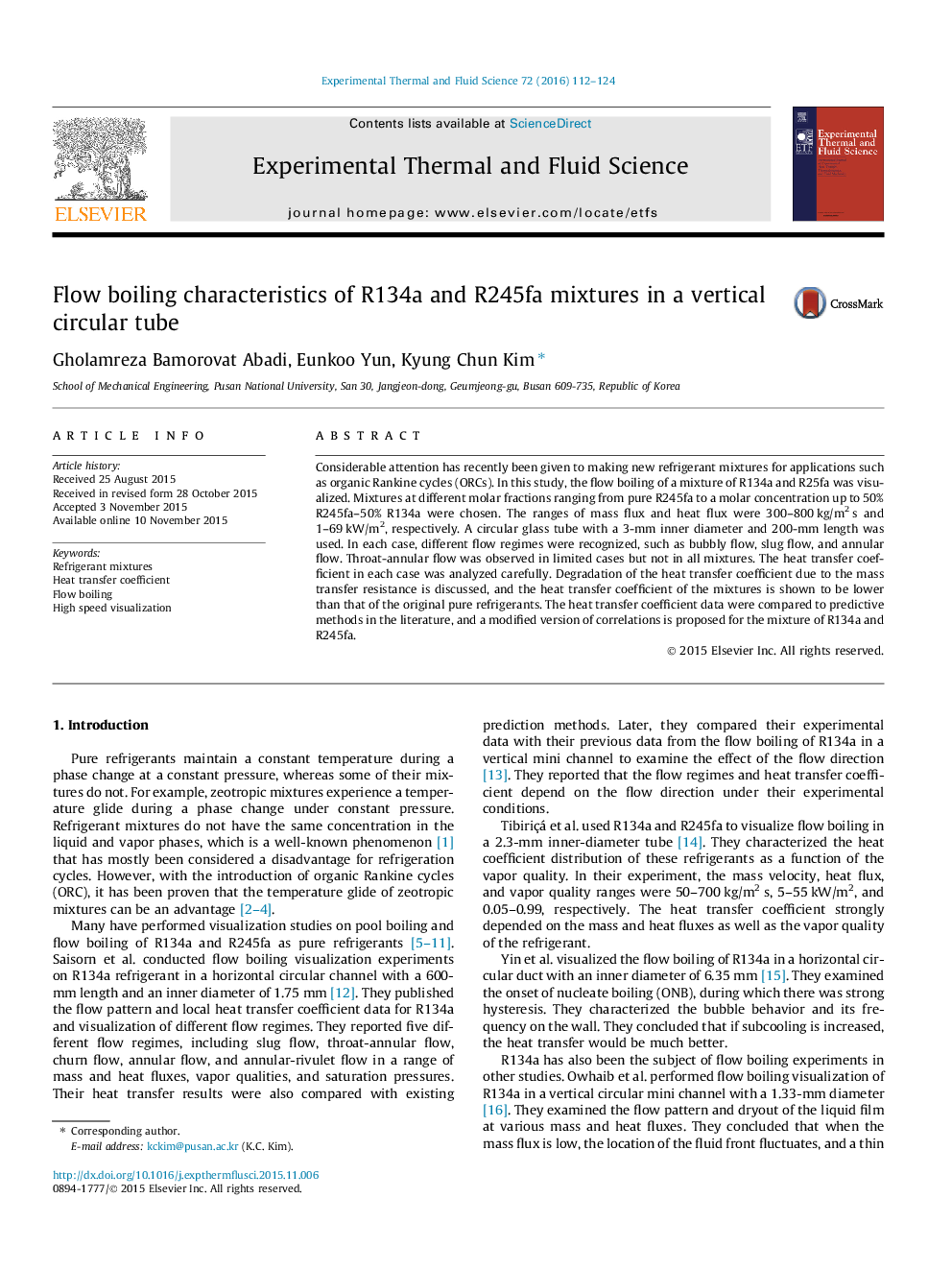| Article ID | Journal | Published Year | Pages | File Type |
|---|---|---|---|---|
| 651165 | Experimental Thermal and Fluid Science | 2016 | 13 Pages |
•Flow boiling visualization was performed on zeotropic mixture of R245fa/R134a.•The heat transfer coefficient in each case was analyzed carefully.•Flow regimes were identified and flow map was obtained.•Heat transfer coefficient data were compared to the predictive methods.
Considerable attention has recently been given to making new refrigerant mixtures for applications such as organic Rankine cycles (ORCs). In this study, the flow boiling of a mixture of R134a and R25fa was visualized. Mixtures at different molar fractions ranging from pure R245fa to a molar concentration up to 50% R245fa–50% R134a were chosen. The ranges of mass flux and heat flux were 300–800 kg/m2 s and 1–69 kW/m2, respectively. A circular glass tube with a 3-mm inner diameter and 200-mm length was used. In each case, different flow regimes were recognized, such as bubbly flow, slug flow, and annular flow. Throat-annular flow was observed in limited cases but not in all mixtures. The heat transfer coefficient in each case was analyzed carefully. Degradation of the heat transfer coefficient due to the mass transfer resistance is discussed, and the heat transfer coefficient of the mixtures is shown to be lower than that of the original pure refrigerants. The heat transfer coefficient data were compared to predictive methods in the literature, and a modified version of correlations is proposed for the mixture of R134a and R245fa.
